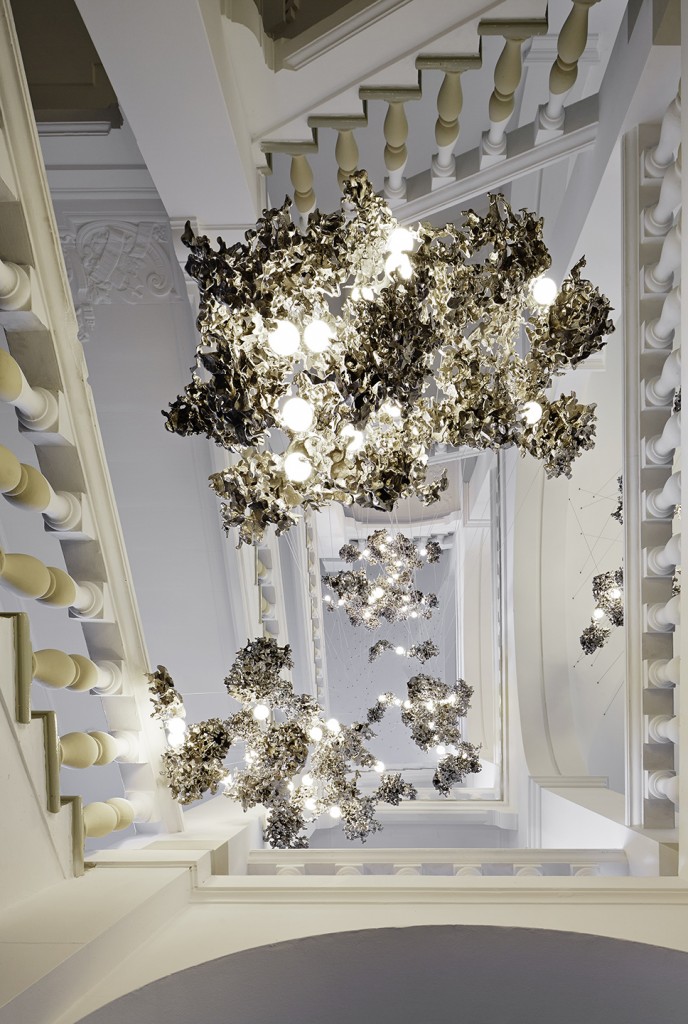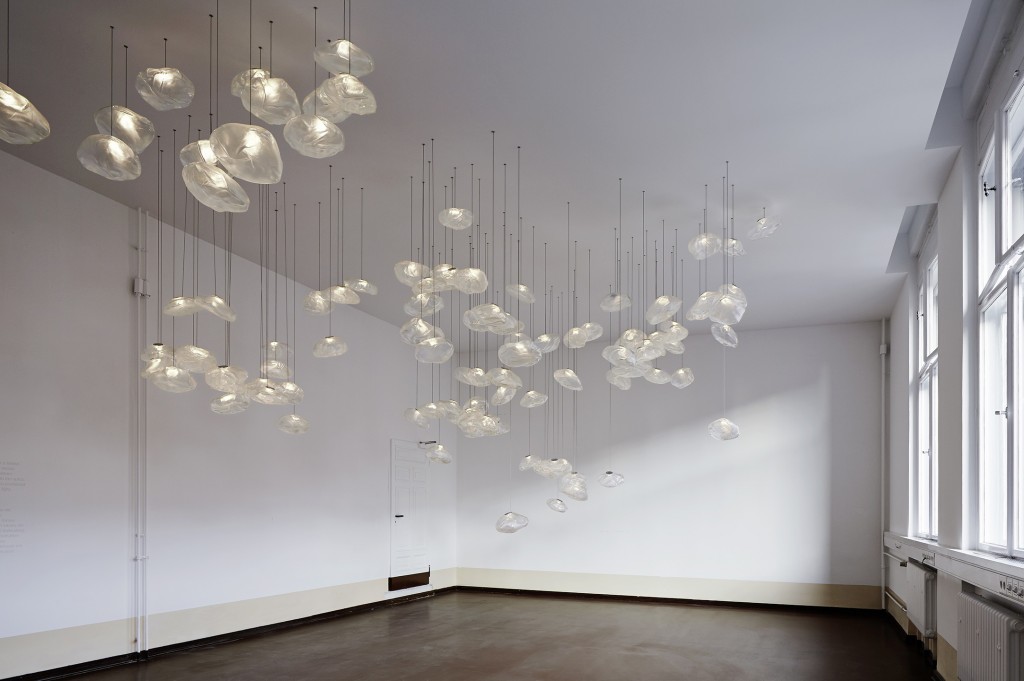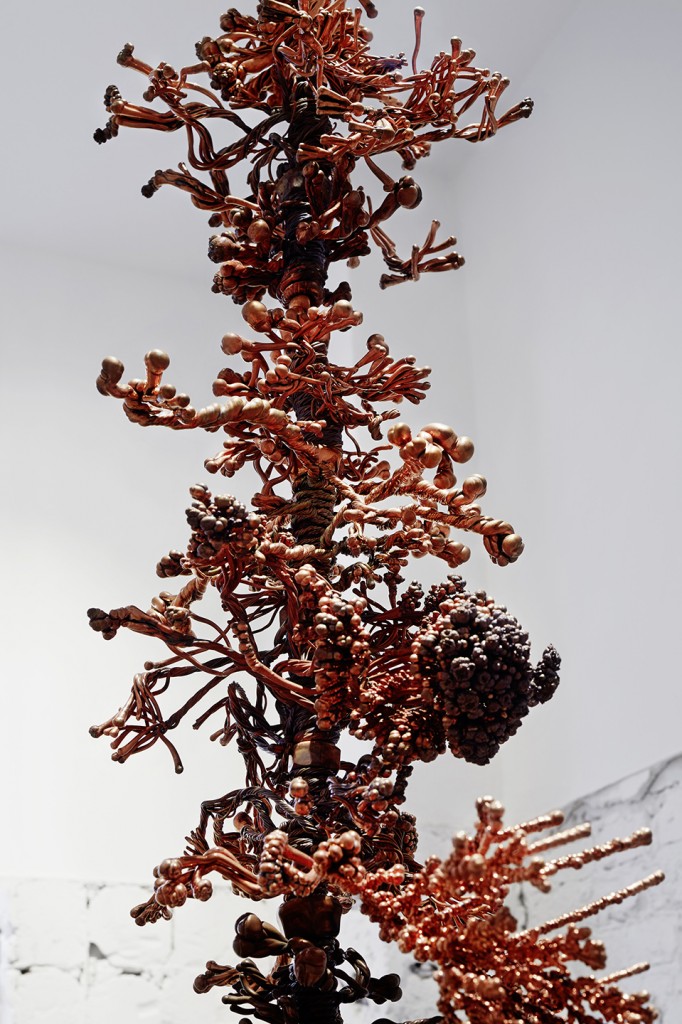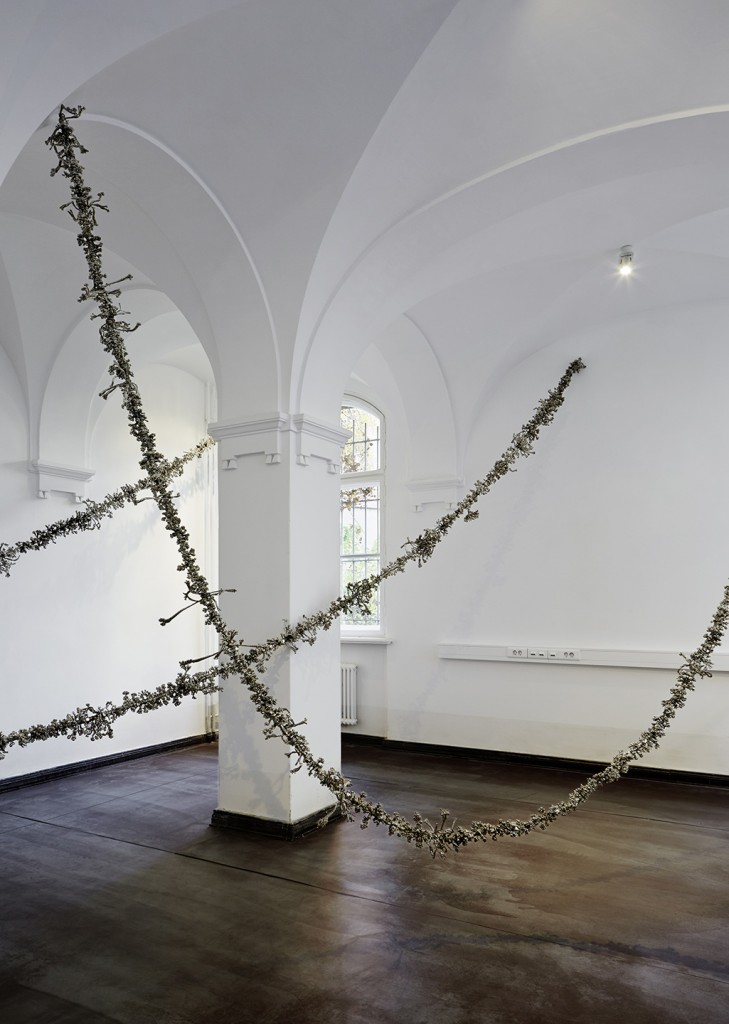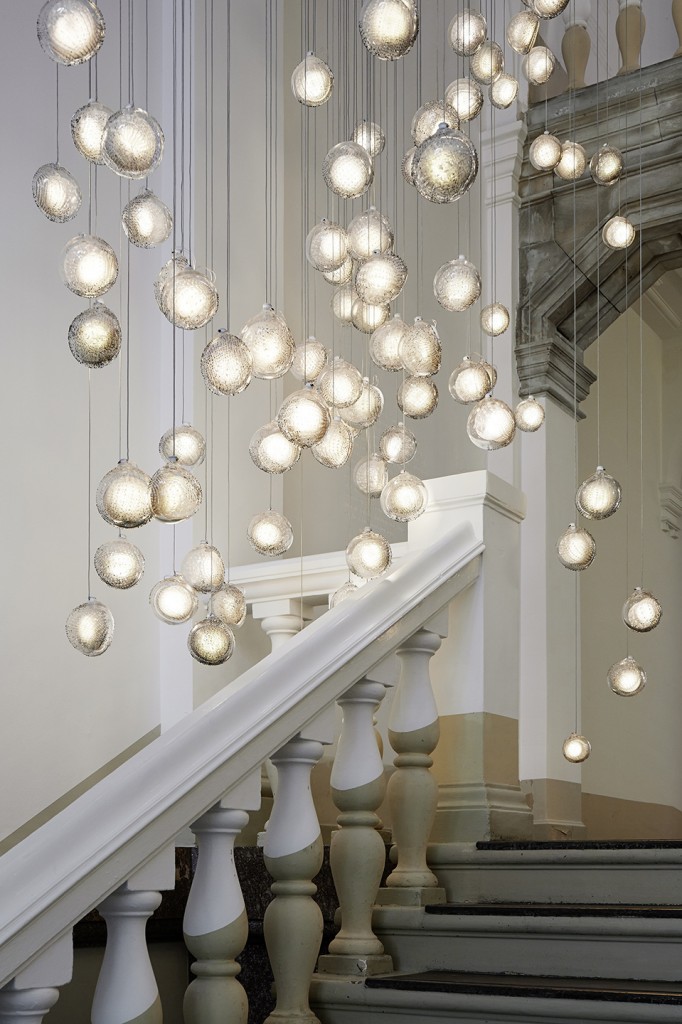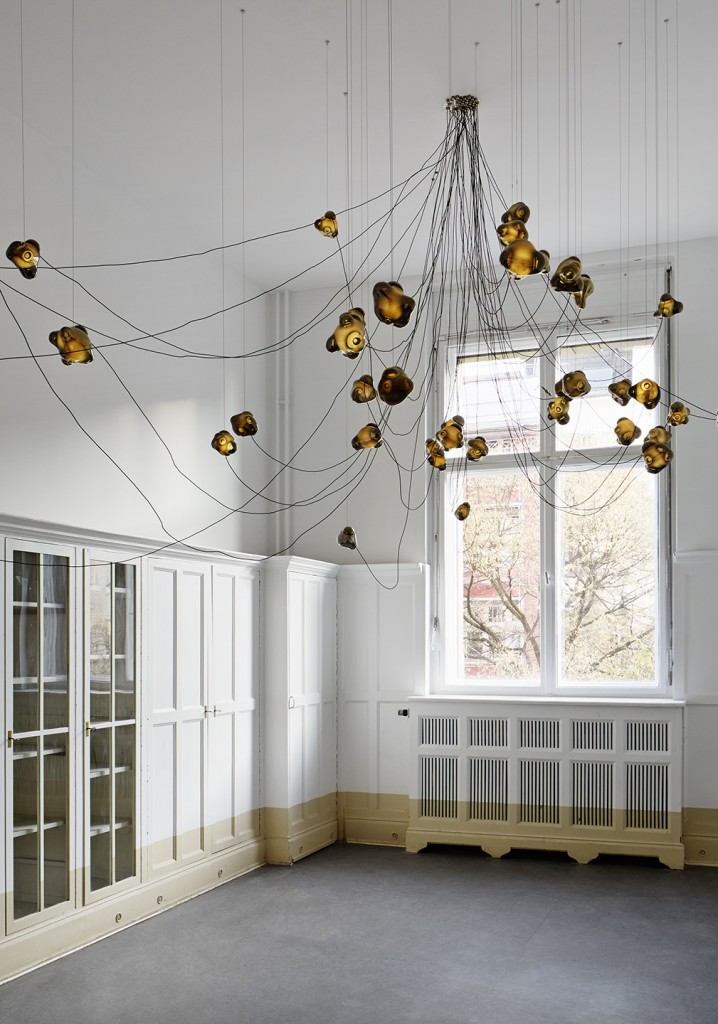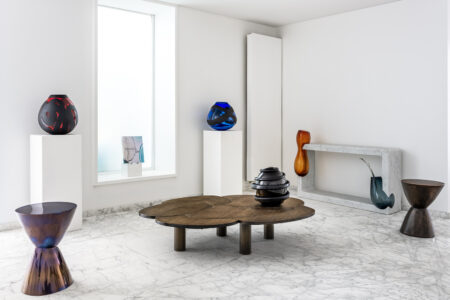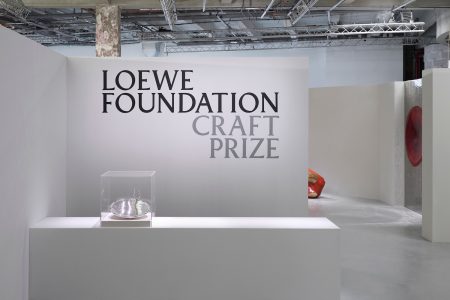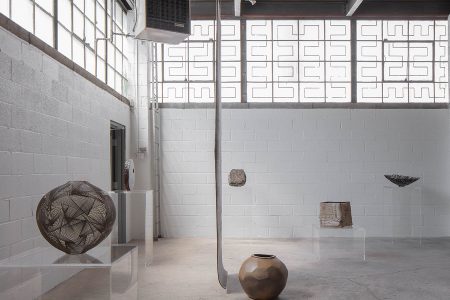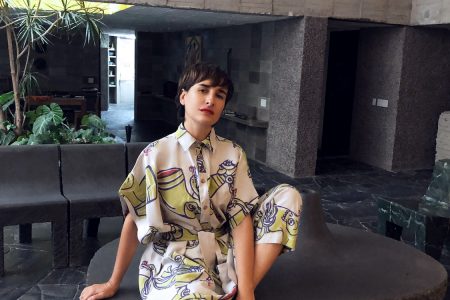Bocci79: 33 Rooms of Gestalt in Berlin
Landing in Berlin after a decade of intensive adventures in Vancouver, design and manufacturing company Bocci reveals its singular secret garden. The space called ‘Bocci79’ is a cabinet of curiosities, a place for testing new techniques and technologies, and a laboratory of fabrication for future artefacts. The magic number 79 matches the new venture in Berlin on Kantstrasse 79 and Bocci’s energetic and passionate leader Omer Arbel’s long list of personal experiments. Renovated by architects Grüntuch-Ernst into a wonderland, Bocci79 is an island of hidden treasures, glass, porcelain and metal installations.
When starting in Vancouver 10-years ago, there was no glass production in Canada. Opening a hotshop from scratch was a real challenge for Omer Arbel, who couldn’t hire people in the US due to employment contingencies. Even though Seattle or Portland – known as the heart of the 1960 Studio Glass movement – were just across the borders, Arbel had to recruit new makers locally. Ever since then, the Bocci entrepreneur and creative director has cultivated an interdisciplinary approach, in which all glass facets and techniques join porcelain and metal processes.
“The form and techniques I explore pushes us to be involved in the industry,” comments Arbel. “A physicality is needed; I never draw a project on paper, my philosophy is to avoid pre-conceived ideas in order to focus along the way on physical, material, mechanical and technical constraints, happenings and unexpected ‘happy’ results.”
His installation at Victoria and Albert Museum was a key moment, revealing the beauty of his work, different from the reality of the European glass scene as more personal, self-referenced and true. The same interaction occured at Dimore Studio. Arbel could be seen as a studio glass artist but with a great aesthetic and sense of gestalt. He also wants to master other materials such as metal and porcelain.
Bocci79 installations sum up all of his obsessions. Numbered like architectural proposals, the experiments are ‘design free,’ highly technical and aesthetically achieved. Works 44 and 71 stand out from the rest. They respectively operate with a low voltage castings of molten aluminium and a repetitive process of submerging machine bolts wrapped in copper wire into nickel or copper based chemical solution, electrolyse.
Vancouver to Berlin: it’s Worth a Long Flight
The Canadian territory doesn’t have enough of a culture in glass for Bocci’s fast growing developments. It’s not only a question of commerce as Bocci being more successful on a global market, but a desire for Arbel to connect with the European glass and ceramics communities.
“With around 10 experiments per year, two or three go to the catalogue to be spread within Bocci’s international distribution network. More than 60 per cent of the brand’s profits are reinvested into research and development which is quite huge for a SME which has grown from a staff of two in 2004 to 40 in Vancouver and six people in Berlin in 10 years time.”
However a social-cultural dialogue, commitment and economic developments were absolutely necessary in pushing Arbel to fly from Vancouver to Berlin, a city that he qualifies as “at the fringe of architecture, design and art.” Located at Kantstrasse 79, in a former 1897 courthouse and municipal property as 1945, the building comes live again as Arbel’s porcelain and glass workshop right in the heart of the city. Thanks to a renewal in Berlin real estate, the building that stood empty for five years is now softly being renovated to welcome this unusual Bocci’s ‘garden of delights’.
Building a community around Bocci
If 33 rooms are occupied by Bocci’s laboratory, Arbel wants to build up a community around his brand and philosophy.
“I am open to explore new ideas and artistic directions through collaborative projects. I’d like to cross-fertilise my own way of thinking by being interdisciplinary in my approach. I have the idea of inviting a scent archaeologists or a very renowned concert pianist, who would turn the space into a single instrument. I look forward to having more culturally-driven projects here than in Vancouver,” states Arbel.
Within six months time in Berlin, the aim is to integrate a porcelain and glass factory into the building and to open it to the public.
“It would be accessible to the public from 11 am to 7 pm, Tuesday to Saturday, allowing everyone to see how the material is processed within the glass and ceramics studios.”
Showcasing glass and porcelain installations at Bocci79 will offer “another layer to materials and objects, a new perception of the scale and potentialities they can bring to the space and architecture they inhabit,” concludes Arbel. •
Main image
Omer Arbel. Photo Patricia Parinejad.
